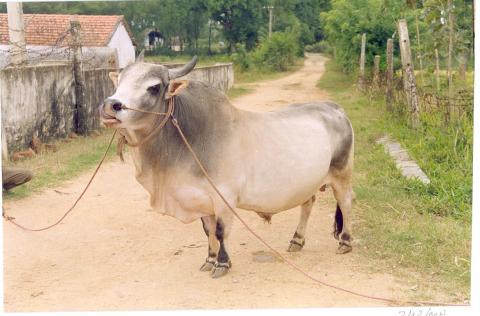Punganur
Punganur is a dwarf dual purpose cattle breed and mainly confined to Chittoor district of Andhra Pradesh. This breed was developed by Rulers of Punganur area and hence named after the area. The breeding tract is confined to the taluks of Punganur and adjacent taluks of Vayalpad, Madnapalli and Palamaner in Chittoor district of Andhra Pradesh. It is mainly maintained at Livestock Research Station, Palamaner, Chittoor district, Andhra Pradesh, attached to Shri Venkateswara Veterinary University, Tirupati. Some animals are also maintained by private breeders. It is white, grey or light brown to dark brown or red in colour. Sometimes, animals with white colour mixed with red, brown or black coloured patches are also seen. Well-noticed by its short stature, the breed has a broad forehead and short horns. The horns are crescent shaped and often loose curving backward and forward in males and lateral and forward in females. Known for draught resistance, it can thrive well on dry fodder feeding. The bullocks are used for agricultural operation in light soil as well as for driving carts for transportation and special races. Average milk yield of the breed is 546 Kg per lactation (ranging from 194 to 1100 Kg) with 5% average milk fat.
For further details, please follow below given link:
http://14.139.252.116/agris/breed.aspx
Compiled by Animal Breeding Group, NDDB from Information System on Animal Genetic Resources of India (AGRI-IS)- developed at National Bureau of Animal genetic Resources, Karnal, Hariana, India.

Comments
Post a Comment